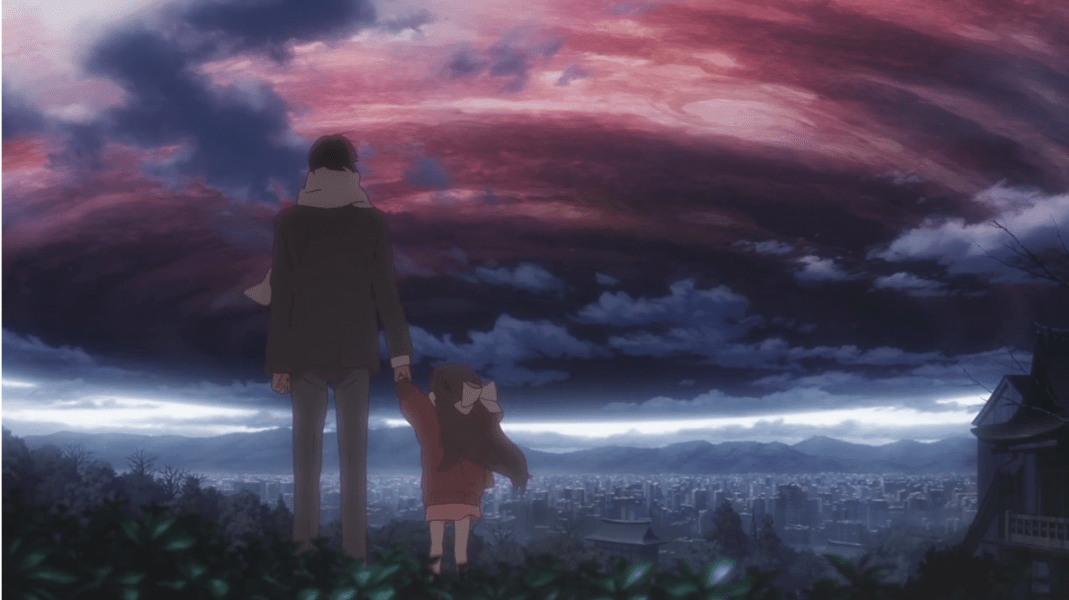On October 18, the year-long collabo between Porter Robinson, Madeon and A-1 Pictures bore fruit in the form of a gorgeous, six-minute music video. It’s 2016, and this is the internet, so naturally a couple of controversies sprang up around the video’s launch. Mods of the anime subreddit declared a ban on the discussion of Shelter, since it didn’t conform to the site’s stated definition of anime. This ruling would be overturned later, but what couldn’t be taken back were the death threats lobbed at the moderators.
Vorgelia, Shadon and The Subtle Doctor dive in and discuss what makes anime anime, whether or not artists should be responsible for behavior their art may incite, making bikes, the moons of Jupiter, Hulk Hogan, and…oh, they also discuss the music video itself!
Direct Download | iTunes | Google Play | Android | Stitcher | YouTube

Time Codes
00:00:00 – Description and discussion of Shelter: The Animation
00:37:19 – How do you define anime?
01:16:48 – Are artists responsible for the behavior their art may lead to?
01:44:56 – Closing, contact info, etc.
Playlist
Porter Robinson ft. Madeon – Shelter
Kohei Tanaka – Final Fusion
Marvin Gaye – Let’s Get It On
Rick Derringer – Real American
Ray LaMontagne – Shelter
Watch Shelter via Porter Robinson’s official YT Channel or at CrunchyRoll.
In light of the recent discussion of the demarcation problem of anime, ANN posted a list of co-productions designed to further facilitate discourse.

Well, I do think that defining anime by it’s geographical origin as animation produced in Japan is perfectly valid. Especially sine it is the clearest way of defining “anime”, although it is complicated by co-productions. According to that definition stuff like RWBY or other non-Japanese productions that draw heavily from anime are not anime. And that’s fine.
However, definitions are not eternal and always bound to a historical context. Defining anime as described above only makes sense, since there are artistic (and maybe business) aspects that make Japanese animation rather unique. If all over the world there were productions popping up that are very similiar or identical to the productions from Japan, the term anime would loose its definatory value.
What annoys me is that anime is segregated into a ghetto of some sort. Why can’t we discuss Japanese cartoons alongside American or French ones? There is a lot of merit in discussing and comparing them together as “animation” instead of putting crippling limits on the discourse. The existence of shows like Avatar, Panty & Stocking or RWBY should be a good motivation to do so.
LikeLiked by 1 person
The more I have thought about this and talked with fans, the more I believe that the geographical delineation will become obsolete sooner rather than later. The industry is globalizing, so we will likely have to find some kind of new definition. I know a lot of people find the issue tedious, but I am actually really interested in this demarcation problem for anime (and demarcation problems in general).
LikeLike
Once we are at this point it may not be the definition of anime that needs changing. Instead we might have to drop the term “anime”, at least as an analytical category. You guys already pointed out, that anime – as a subsection of the medium of animation – can not be adequately defined by its tropes or styles. Considering this I am not sure wheter “anime” can be upheld as a useful category once shows and films with similiar traits are regularly beeing released in China, Russia or the US.
LikeLiked by 1 person
Unless the term’s cultural currency in the west supersedes the logical value of using the term animation. In that case, anime would be everything and there would be sub-species within the group. Like music. Not saying this is nailed on to happen, but I could see it.
LikeLike